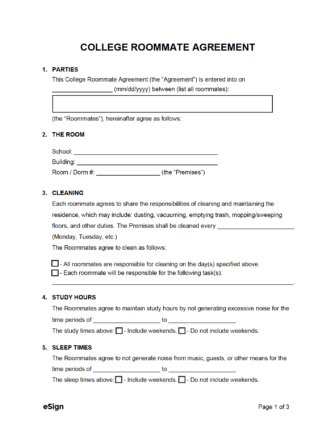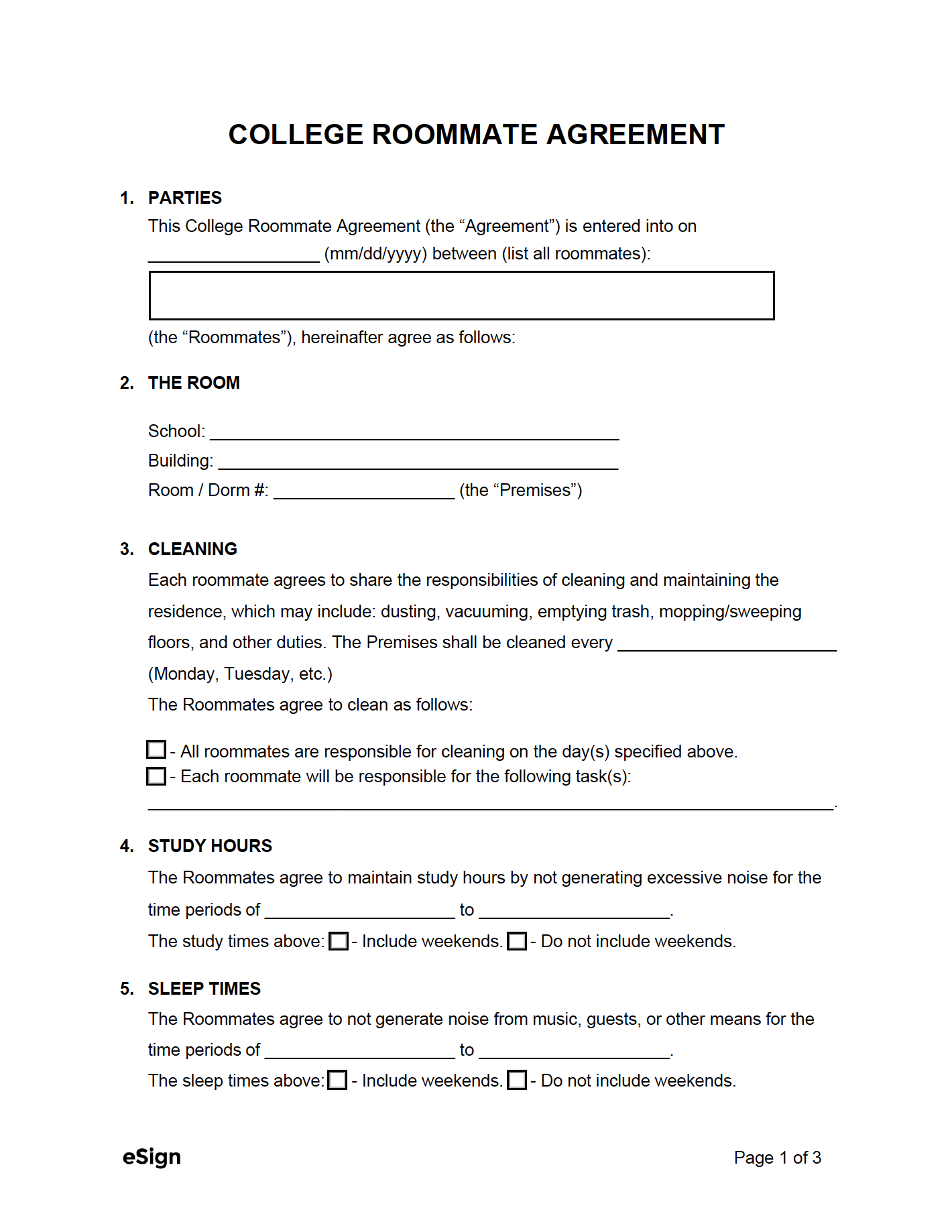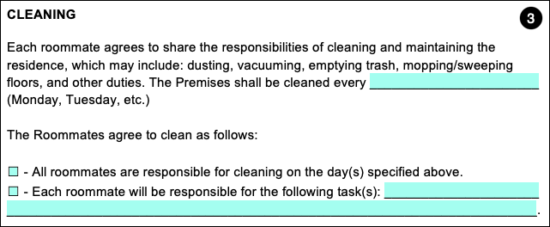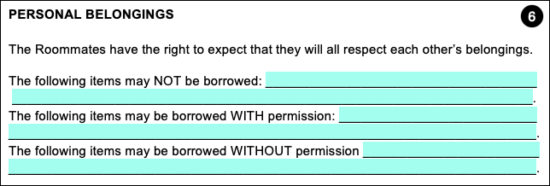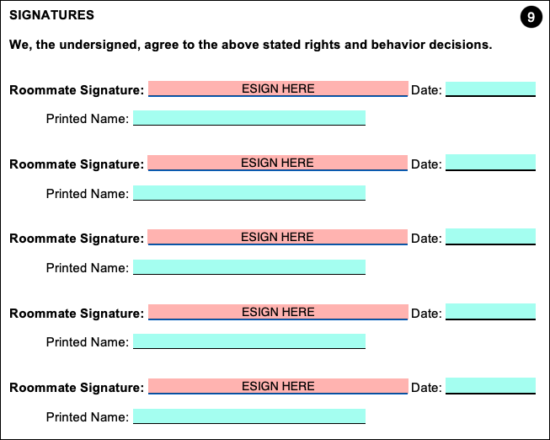A college roommate agreement is a form used for setting general rules and expectations for students sharing the same dorm or apartment. The document contains terms for study hours, guests, cleaning, utilities, food, possessions, smoking/drinking, parties, and more.
Unlike an original lease agreement signed with a landlord, a college roommate agreement is only partly legally binding. This means that some of the terms within the document could be enforced by law (such as rent payment, smoking rules, utilities) while others will not (household duties, sharing groceries, etc.). In general, a college roommate agreement is more about amicability and coexistence, as it focuses on promoting a friendly atmosphere and reducing the likelihood of confrontation.

Also known as a:
- “Dorm room agreement”
- “University roommate agreement”
- “Residence hall roommate agreement”
Roommate agreement – A binding document for non-students sharing the same rented apartment, condominium, or home.
What to Include in the Agreement
The sections that should be included in the agreement are those that most often lead to conflict. Because the agreement is designed to create a congenial living environment for the roommates, they can add anything they feel could lead to complications down the road. If the roommates don’t know each other prior to moving in, they can use the agreement to learn what everyone is comfortable with and set boundaries accordingly.
Recommended topics to include in the agreement:
- Cleaning – Even though the majority of college dorms aren’t equipped with a kitchen or bathroom, it doesn’t mean conflicts won’t arise. Dirt and possessions can clutter footpaths and common areas in no time at all. Establishing a day or two during the week where all roommates help out with cleaning is recommended.
- Privacy – In a one (1) room dorm, privacy can be hard to come by. While some roommates may take it to the extreme with tape lines marking boundaries, simply setting rules on belongings and food sharing is most likely all that is needed.
- Guests – With dorms being a tight squeeze as it is, visitors that overstay their welcome can become a source of animosity among roommates. To get around this, roommates can establish limits on the number of guests and the times that guests are permitted in the dorm.
- Quiet / study times – To ensure roommates have a dedicated time to study and sleep, setting times during the week (and weekend if desired) for quiet is highly recommended.
- Dispute resolution – The roommates should establish the steps they agree to take in the event there is an argument. This can include going to a trusted third (3rd) party to review both sides, or consulting an RA to help reach a compromise.
A note about roommates: At the end of the day, an agreement won’t stop a roommate from mistreating the others if he or she doesn’t respect them from the start. A roommate contract only works among those that treat one another with the fairness and respect they deserve. If a roommate is having trouble with another touching/stealing their belongings, keeping them up late hours of the night, or not respecting their privacy, the best thing the roommate can do is leave and find another roommate.
How to Write
Download: PDF, Word (.docx), OpenDocument
Step 1 – Date & Roommate Names
Enter the date (day, month, year) the agreement is being completed, followed by each roommate’s name.
Step 2 – The Room
Provide the name of the university or college on the first line, followed by the name of the building and the dorm or room number (#).
Step 3 – Cleaning
Specify the day(s) of the week the roommates will clean the room. If the roommates share all the cleaning tasks, check the first box. If not, check the second box and enter the tasks each roommate is responsible for (e.g., “Johnny – Mopping”).
Step 4 – Study Hours
Study hours are a block of time that gives the roommates a chance to study free from distractions. Anywhere from one (1) to hour (4) hours is customary. Once the times have been inputted, check the box corresponding to whether the study times include weekends or not.
Step 5 – Sleep Times
Enter the start and end times to indicate when the roommates are restricted from making noise. If the times should include weekends, check the first box. Otherwise, check “do not include weekends.”
Step 6 – Belongings
Personal possessions commonly lead to arguments among roommates. In the first section, list the items that cannot be borrowed for any reason (e.g., clothes and hygiene products). On the following line, enter the types of belongings that can be used with permission from the other roommates (e.g., electronics and sports equipment). Finally, provide the objects that can be used anytime without permission by the roommates (e.g., TV and furniture).
Step 7 – Shared Costs
If the roommates agree to share the costs of food or other supplies, enter them on the two (2) lines provided. Then, check one (1) of the boxes to indicate whether the costs will be shared weekly or monthly.
Step 8 – Additional Terms & Conditions
The roommates can include any info or rules in this section.
Step 9 – Signatures
All roommates will need to record their signatures (with eSign or by hand), including the date they signed, followed by their full printed name. Once completed, a copy should be kept by each roommate. Printing out a master copy and placing it in a common area is a great way to keep the rules fresh in everyone’s mind.
